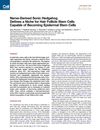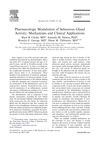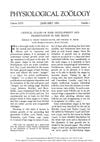Mice Lacking the Epidermal Retinol Dehydrogenases SDR16C5 and SDR16C6 Display Accelerated Hair Growth and Enlarged Meibomian Glands
September 2019
in “
Journal of biological chemistry/The Journal of biological chemistry
”
epidermal retinol dehydrogenases SDR16C5 SDR16C6 retinoic acid biosynthesis hair-follicle cycle sebaceous glands meibomian glands hair-follicle stem cell genes retinoic acid signaling skin retinol dehydrogenase activity retinol dehydrogenases retinoic acid hair cycle stem cell genes skin retinol activity
TLDR Mice without certain skin enzymes have faster hair growth and bigger eye glands.
The study demonstrated that mice lacking the epidermal retinol dehydrogenases SDR16C5 and SDR16C6 exhibited accelerated hair growth and enlarged meibomian glands. These enzymes were crucial for retinoic acid biosynthesis, as their absence led to an 80% reduction in retinol dehydrogenase activity in skin. Despite this, the double-knockout mice were viable and fertile, indicating these enzymes were not essential for survival but played significant roles in regulating the hair-follicle cycle and gland size. The findings suggested potential targets for treating hair loss conditions.











